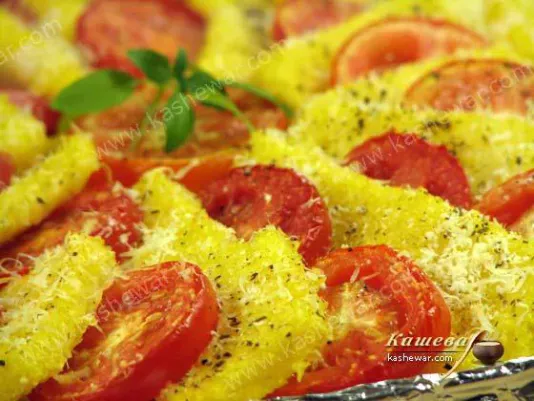Watermelon Cocktail
Watermelon cocktail is an Italian recipe, a great light cocktail for the weekend.

Italian cuisine is one of the most famous and beloved in the world. It combines millennia-old traditions, seasonal ingredients, and an unmatched sense of taste and balance. At the core of its philosophy is simplicity: instead of complex cooking techniques – the freshness of ingredients, correct combinations, and skilled preparation. Traditional dishes – pasta, pizza, risotto, lasagna, tiramisu – have long become Italy’s trademarks. But each name carries a story: family, regional, national. Italians eat with passion, unhurriedly, surrounded by loved ones and a glass of wine. Every meal is a moment of joy, care, and respect for tradition. Regional diversity, high-quality ingredients, extra virgin olive oil, fresh vegetables, cheese, and seafood – all contribute to a unique culinary world that remains true to its roots.
Each dish in Italy reflects tradition, a love of the land, and seasonality. Pasta is the heart of Italian cooking: spaghetti, tagliatelle, penne, ravioli, gnocchi – all made from durum wheat and served with countless sauces: tomato, cream, meat, pesto. Pizza is an iconic dish from Naples, where thin dough, tomato sauce, mozzarella, and basil create the perfect Margherita. Northern risotto is creamy rice with white wine, broth, and cheese. Lasagna, minestrone, carbonara, caprese – all are recipes passed down through generations. Italian recipes are easy to prepare but require precision: proper pasta cooking time, correct oil ratios, and fresh herbs. Everything matters – from the type of cheese to the kind of olives. This is a cuisine of intuition, where success depends on a sense of taste and love for the craft.
Every region in Italy has its own culinary soul. Piedmont – truffles, creamy sauces, and rich meat dishes. Lombardy – risotto, polenta, and aged cheeses. Emilia-Romagna – the birthplace of Parmesan, prosciutto, and Bolognese. Tuscany is known for rustic dishes: bean soups, bruschetta, and olive oil. Umbria and Marche – lands of mushrooms, game, and truffles. Naples – pizza, Campania – buffalo mozzarella. Apulia – home of orecchiette pasta, olives, and wine. Sicily – a blend of Arab, Spanish, and Greek culinary influences: caponata, cannoli, granita. Sardinia – an island of pasta, sheep’s cheese, and special breads. This richness creates an incredible palette of dishes that, despite regional differences, preserve a shared Italian identity – respect for ingredients, seasonality, and tradition.
The key ingredients of Italian cuisine are pasta, tomatoes, olive oil, garlic, basil, and cheese. Pasta is more than just a product – it is a culture: fresh or dried, in many shapes, each chosen to match the sauce. Tomatoes are the base of many sauces, from simple salsa di pomodoro to complex ragù. Olive oil is the gold standard – used for frying, dressing, and marinating. Garlic and basil provide the signature aromas. Cheeses – Parmesan, Pecorino, Mozzarella, Gorgonzola – bring depth of flavor. Legumes, rice, vegetables, seafood, meat, balsamic vinegar, and wine all combine harmoniously, forming a cuisine without excess. Italians value balance and naturalness. Flavors should be clean and expressive, without too many spices. That’s why even the simplest dishes taste exquisite.
The Italian eating rhythm is structured and consistent. Breakfast is light: coffee, croissant, or biscuit. Lunch is the main meal: antipasto (starter), first course (pasta, soup), second course (meat or fish with a side), dessert or fruit, and coffee. Dinner follows a similar structure but is lighter. Italians value time at the table, conversation, and shared meals. Wine is an integral part of dining, as is water. The tradition of “aperitivo” – a light snack with a drink before dinner – is popular in cities. Meals are enjoyed slowly, with attention, respect for food, and conversation. Italian cuisine is not just about dishes, but a lifestyle where every detail matters: the tableware, presentation, serving. This is why Italy’s gastronomic culture is recognized as a part of world heritage.
Italian desserts are true masterpieces of flavor and texture. Tiramisu, panna cotta, cannoli, zeppole, baba, tartufo – each has its own story and character. They are made with eggs, cream, mascarpone cheese, chocolate, almonds, and citrus fruits. For holidays, Italians prepare panettone, colomba, castagnaccio. Italian coffee is a ritual: espresso, cappuccino, macchiato – served short and straightforward, without frills. Popular liqueurs include amaro, limoncello, grappa, and sambuca. Food is a source of national pride: it is taught in schools, promoted internationally, and protected by geographical designations. Italian cuisine is emotion, tradition, and culture – passed from grandmothers to grandchildren, preserved and enriched every day.